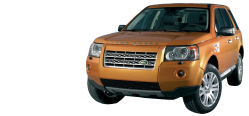
|
|
| Home · FAQ · New Posts · My Posts · PMs · Search · Members · Members Map · Calendar · Profile · Donate · Register · Log In |
 | Home > Off Topic > Disadvantage of Electric Rear Axle in 4 x4 (& New DS) |
 
|
|
|
| IanMetro Member Since: 11 Sep 2017 Location: Somerset BS21 Posts: 3274  
|
I am not sure that providing a separate electric motor to the rear axle will give as good 4 wheel drive performance as using traditional clutch/differential connections from main engine/power source.
|
||
|
| Dartman the one Member Since: 04 Apr 2013 Location: Seville, Spain Posts: 1697 
|
The Outlander is not designed to tow it can tow and seemingly only just, the capability of any car depends on the power of the motors the size of the conductors to the motor from the battery and the current drain of the battery based on temperature and time.
|
||
|
| IanMetro Member Since: 11 Sep 2017 Location: Somerset BS21 Posts: 3274  
|
As the Outlander was one of the first PHEV, with quite a novel all electric (plus ICE charging - yes and a little direct ICE drive in some cruising conditions), the 'pioneer' first owners observed and 'back engineered' the electronic/electrical systems in some detail.
|
||
|
| Andy131 Member Since: 10 Dec 2009 Location: Manchester Posts: 2187 
|
Interesting if long read, brings up several points.
|
||||
|
| Dartman the one Member Since: 04 Apr 2013 Location: Seville, Spain Posts: 1697 
|
Series DC motors have high torque on startup however their current draw is high, the starter motor is a good example, the software is the critical component in electronic control 4wd, unless the software recognises all the wheels are braked and releases them to start again and or cut the power it's not fit for purpose. Torque is required to move the vehicle, however it is also the product that spins the wheels, the software must recognise and compute all conditions. my PC is slightly to the right of Genghis
|
||
|
| IanMetro Member Since: 11 Sep 2017 Location: Somerset BS21 Posts: 3274  
|
I started this thread after reading Andy131 on this thread
|
||
|
| Andy131 Member Since: 10 Dec 2009 Location: Manchester Posts: 2187 
|
Much as I would like to believe that software is the panacea to all vehicle ills it's not true.
|
||
|
| IanMetro Member Since: 11 Sep 2017 Location: Somerset BS21 Posts: 3274  
|
|
||
|
| Dartman the one Member Since: 04 Apr 2013 Location: Seville, Spain Posts: 1697 
|
800v is about the voltage the old O and P class submarines ran on, obviously the new motors will be much more efficient, would assume the electronics will allow various voltages to be tapped off the battery to either extend the range or travel at higher speeds. 800v reduces the cable cross sectional area thus weight and cost, the down side is that it is a killer voltage therefore the measures to prevent inadvertent exposure and idiot proof to amatuer mechanics. There is also the wading problem, or will that option disappear, we have seen F1 drivers jump clear after accidents so as not to be the best route for the battery to ground thus experiencing a fatal shock, 80 + pensioners trying to jump out of the car after a crash doesn't seem practical |
||
|
| Andy131 Member Since: 10 Dec 2009 Location: Manchester Posts: 2187 
|
Lets be serious here 80Vdc is a killer, I know the regs say 150Vdc, but I for one have seen really bad burns at 72Vdc, the current available is frightening. So 800V is no more scary than the average forklift battery, insulation levels are similar as the ability to jump a gap is similar - once an arc has started the game is VERY different.
|
||
|
| IanMetro Member Since: 11 Sep 2017 Location: Somerset BS21 Posts: 3274  
|
Andy131 said
|
||
|
 
|
|
| All times are GMT + 1 Hour |
< Previous Topic | Next Topic > |
Posting Rules
|
Site Copyright © 2006-2025 Futuranet Ltd & Martin Lewis
![]()


